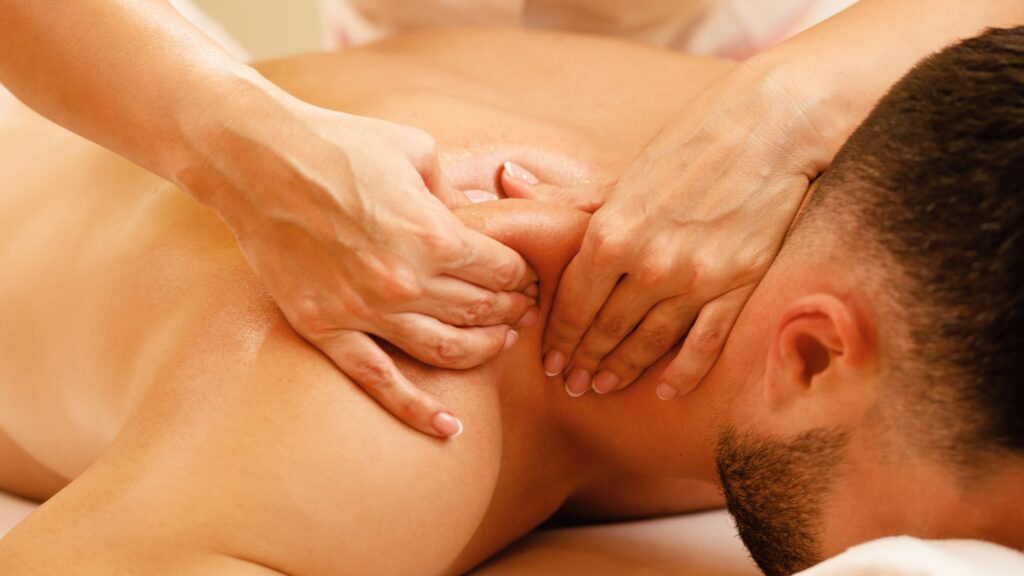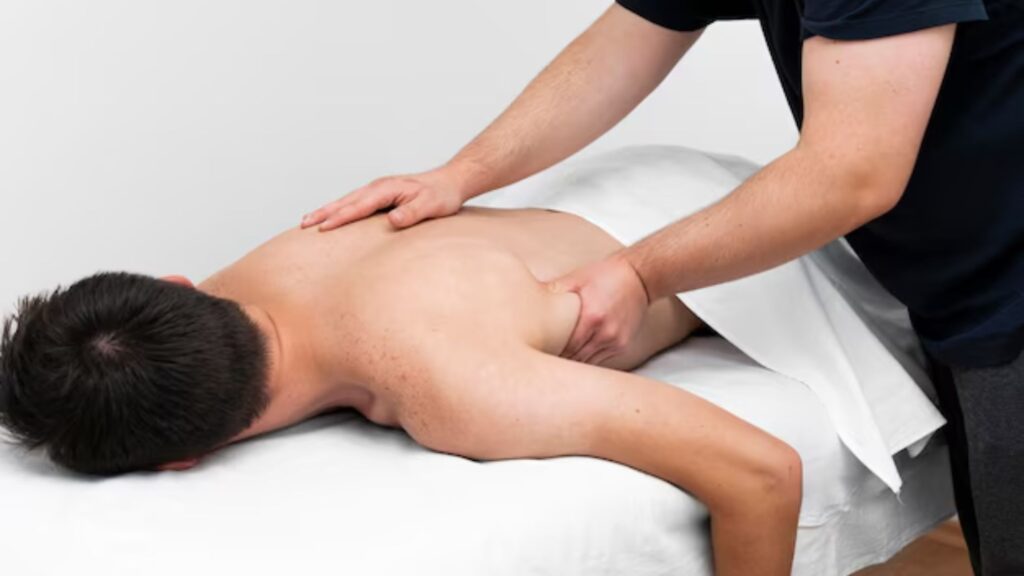When you think of a massage, chances are you picture a relaxing spa day—a serene room, soft music, and a pair of expert hands working out the tension in your back. But deep tissue massage is much more than just a feel-good indulgence. It’s a powerful therapy that dives beneath the surface to release chronic tension, aid muscle recovery, improve circulation, and even boost mental clarity.
In this article, we’ll explore how deep tissue massage works, its lesser-known health benefits, and why incorporating it into your wellness routine might be one of the best decisions you make for your body. Plus, we’ll show you how this therapy compares and blends beautifully with other treatments like full body combination massage and massage with hot stones.
What Is Deep Tissue Massage?
Deep tissue massage is a form of therapeutic massage that focuses on the deeper layers of muscles and connective tissue. It uses slow, firm strokes and deep finger pressure to relieve chronic muscle tension. This type of massage is especially effective for those who suffer from issues like back pain, stiff necks, sore shoulders, or tight legs.
Unlike the more relaxing Swedish massage, deep tissue targets specific areas where tension is held, often resulting from overuse, injury, or poor posture.
How Deep Tissue Massage Heals the Body
1. Breaks Down Scar Tissue
One of the most profound benefits of deep tissue massage is its ability to break down scar tissue. Whether from surgery, injury, or overuse, scar tissue can restrict movement and cause discomfort. Regular massage helps improve lymphatic circulation and increases flexibility in the affected areas.
2. Improves Circulation
Deep strokes during a deep tissue massage encourage better blood flow throughout the body. This improved circulation not only nourishes the muscles but also helps remove toxins that build up due to stress or physical strain.
3. Reduces Chronic Pain
Studies have shown that deep tissue massage can be more effective than conventional medical treatments for certain types of chronic pain. By easing muscle tension and inflammation, it offers a natural way to relieve discomfort, especially in the lower back and neck.
4. Lowers Blood Pressure and Heart Rate
This might surprise you, but research suggests that deep tissue massage can help lower blood pressure and slow heart rate. The deep pressure stimulates the vagus nerve, part of the parasympathetic nervous system, which promotes relaxation and healing.
5. Enhances Posture and Alignment
Many of us spend hours hunched over desks or screens. Over time, this leads to poor posture and muscular imbalances. Deep tissue massage helps realign the body by loosening tight muscles and restoring balance, allowing your spine to find its natural position again.
The Mind-Body Connection
The benefits of deep tissue massage aren’t just physical. The release of endorphins—your body’s natural “feel-good” chemicals—can improve mood and reduce anxiety. People often report feeling lighter, calmer, and mentally clearer after a session. When your body is no longer carrying around hidden tension, your mind follows suit.
When to Choose Deep Tissue Massage
You might consider deep tissue massage if:
- You have chronic muscle pain or tightness.
- You’re recovering from an injury.
- You have limited mobility or repetitive strain injuries.
- You deal with stress-related tension in your shoulders, neck, or back.
- You want to improve your range of motion.
However, this therapy isn’t for everyone. If you’re dealing with acute inflammation, osteoporosis, or certain medical conditions, consult your doctor first.
Complementary Therapies That Enhance Deep Tissue Massage

To take your bodywork to the next level, you might want to explore treatments that pair beautifully with deep tissue massage.
Full Body Combination Massage
A full body combination massage blends techniques from various massage styles—often including Swedish, Thai, and deep tissue—customized to your body’s needs. This approach allows you to experience the therapeutic benefits of deeper work where it’s needed, while still enjoying relaxation for the rest of your body. It’s perfect for those who want a balance of intensity and calm.
Massage with Hot Stones
A massage with hot stones uses smooth, heated stones placed on key points of the body. The heat helps muscles relax, making it easier for the therapist to perform deeper techniques. When combined with deep tissue massage, the warmth from the stones enhances blood flow and makes the deep work more effective and less intense. It’s especially beneficial for anyone with stubborn knots or tension.
Real-Life Healing Stories
Many athletes and people with physically demanding jobs turn to deep tissue massage as a regular part of their recovery. Even office workers have found relief from tech neck and posture-related issues through consistent therapy.
One client described how, after months of lower back pain and restless nights, a series of deep tissue sessions combined with a massage with hot stones finally gave them the relief they’d been chasing. Another found that alternating between deep tissue massage and full body combination massage helped prevent migraines triggered by shoulder tension.
Tips for Getting the Most Out of Your Session

- Communicate with your therapist. Let them know what areas need attention and how much pressure feels right.
- Hydrate before and after. Deep massage releases toxins, and drinking water helps flush them from your system.
- Rest post-session. Give your body time to integrate the work that’s been done.
- Book consistently. Like exercise, the benefits of massage build over time.
FAQs About Deep Tissue Massage
1. Is deep tissue massage painful?
It can be intense, but it shouldn’t be unbearably painful. You might feel discomfort when the therapist works through tense areas, but communication is key. Let your therapist know if the pressure is too much.
2. How often should I get a deep tissue massage?
This depends on your body and lifestyle. For chronic pain or athletic recovery, once a week or every two weeks is common. For general maintenance, once a month may be sufficient.
3. Can deep tissue massage help with stress?
Absolutely. While it’s known for physical relief, the mental relaxation and endorphin release it provides can significantly reduce stress and anxiety levels.
4. What’s the difference between a full body combination massage and deep tissue massage?
A full body combination massage includes a blend of techniques and usually covers the entire body in a single session. In contrast, deep tissue massage focuses more intensely on specific problem areas using firmer pressure.
5. Is it okay to combine hot stone therapy with deep tissue massage?
Yes, and it’s highly recommended! A massage with hot stones can warm up your muscles, allowing for deeper work with less discomfort.
Final Thoughts
Your body is incredibly adaptive, but it also stores stress, strain, and emotional tension deep within the muscles. Deep tissue massage is a powerful healing modality that goes beyond relaxation to restore true balance to your body. When paired with treatments like full body combination massage or a soothing massage with hot stones, it becomes a complete wellness experience.
So, whether you’re an athlete, a desk warrior, or just someone carrying the weight of daily life, consider adding deep tissue massage to your self-care toolkit. You’ll be surprised just how much better your body—and mind—can feel.




